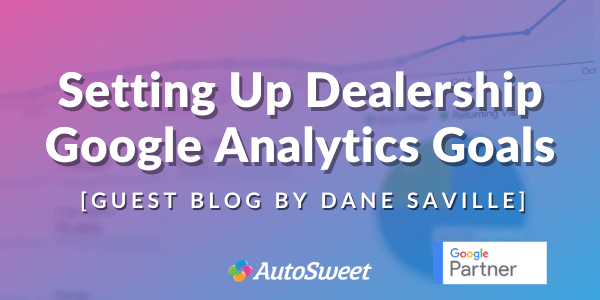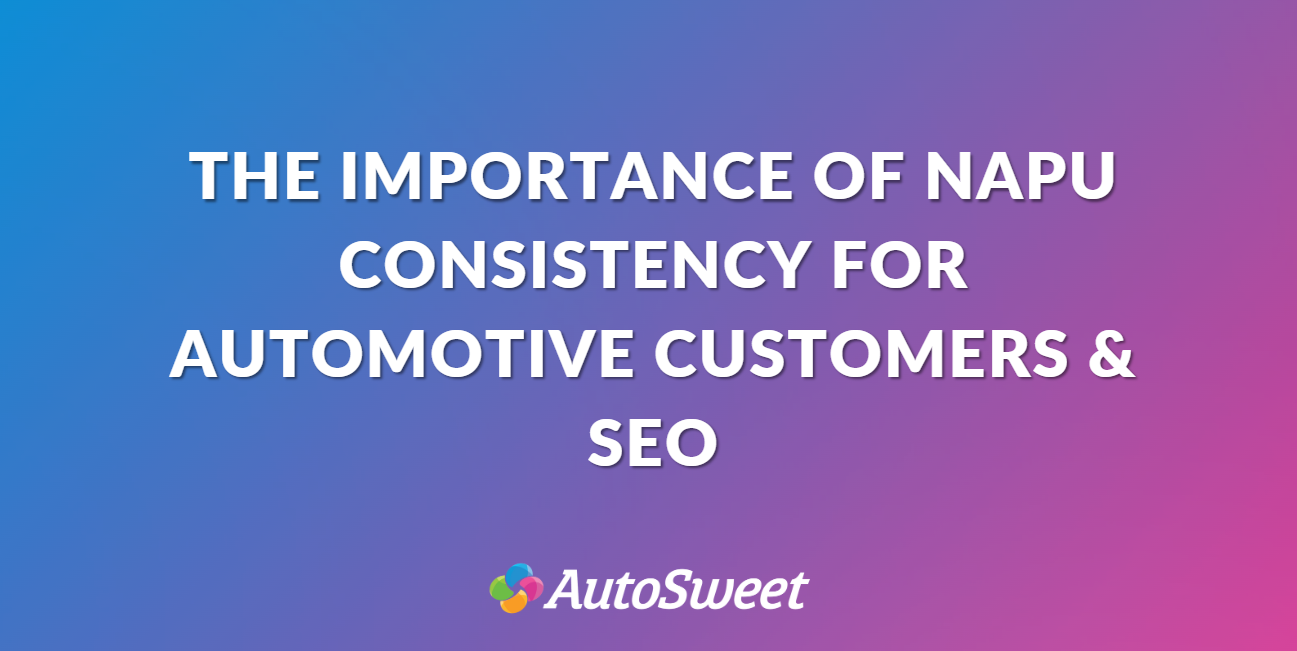
Dane Saville is a Founding Partner and Brand Manager for Reunion Marketing in Raleigh, North Carolina, where he has continued to develop the craft of content creation with a focus on automotive digital marketing. Reunion Marketing is a full-service digital marketing agency with a focus on automotive dealerships and healthcare professionals and specializing in SEO, SEM, Social, Content, and Re-Targeting.
How To Set Google Analytics Goals
Your dealership’s Google Analytics account is live and ready for action. The next step is knowing how to measure — and eventually benchmark — the data points most important to your business objectives.
We recommend a breakdown of macro-conversion and micro-conversion goals.
Macro-conversions are when a user submits information when they visit a particular page:
- Mobile calls
- Form submissions
- Chat leads
- Text leads
Micro-conversions are when a user takes an action that’s step closer to submitting information:
- New VDP views
- Used VDP views
- CPO VDP views
- Schedule service
So these are, in other words, big steps (macro) and little steps (micro) toward purchasing a car. Once you have these set, you can see much more information about conversions:
- Traffic sources — where online they found you
- Devices — what they used to find you online
- Days and hours of the week — when they found you online
- Geographies — where in person they came from
- Purpose pages — what pages they looked at in the lead up to a micro- or macro-
Here’s How to Set Your Goals in Google Analytics
Once you’re logged in …
Click on “ADMIN” (bottom-left corner):

Go to the “VIEW” section:

Click “NEW GOAL””

Just Three More Steps to Go
Click “Custom”:

Type the goal name:

Fill in the details:

This will be for basic tracking of when people land on the pages that contain all of your goals.
Toggle to “Begins with” and enter the beginning of the URI (not the entire URL), which comes after the point that all similar pages you want to track have a consistent structure.
EX: “www.samplewebsite.com/the-url-your-goal-page-begins-with
If you want to more closely track when people submit information on your Macro-goals, you’ll need to perform a little coding — but that’s where we have to stop with goal setting!
As a peace offering for not revealing the secret sauce of our coding, here are two more actions you can take on your own to get more insights from Google Analytics.
Connect Search Console and AdWord to Google Analytics
So, let’s quickly cover what information you can pull when you connect these to your Google Analytics account:
Search Console shows organic queries people type and where you rank on average. Think about if you’re ranking well and winning those searches?
AdWords shows you which ad groups convert, so you know if you’re spending wisely, as well as if you’re ranking well in search for your high-conversion keywords.
Pretty important, right? Okay, so here’s how you connect each one:
Connecting Search Console
Sign in to your Analytics account.
- Click Admin
- Go to the property you want to enable Search Console data.
- Under PROPERTY, click Property Settings.

Scroll to Search Console and click “Adjust Search Console.”

You will see the URL of your website if it is verified. If not, you’ll need to add your site to Search Console. You can do so by clicking “Add.”

Once added, you’ll have a list of sites to choose. Click the checkbox for your site and save the changes.
When that’s done, you’ve successfully connected Search Console with Analytics.

Connecting Adwords
In Analytics, click “Admin.”

Under Property, click “AdWords Linking.”

Next, click on +NEW LINK GROUP.

You should be able to find your AdWords account and check next to it.
Click “Continue.”
Here’s an example of a client’s list. Be sure the account you’re linking is the same one in AdWords where you’ve built campaigns.

Now you can equip your dealership with the data you need to start making even more strategic decisions about digital marketing — to drive more traffic and generate more leads.



